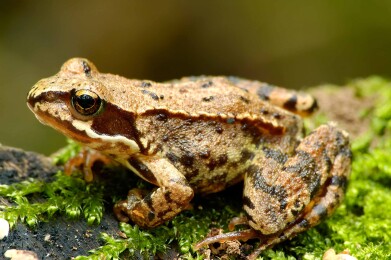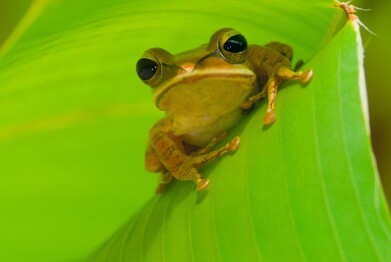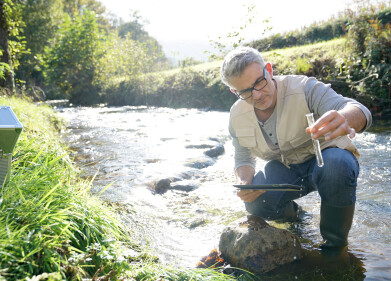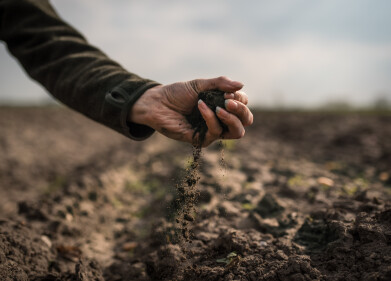Soil Testing
How do we monitor the pathogen driving mass extinction of amphibians
Oct 26 2024
In a devastating blow to global biodiversity, the chytrid fungi Batrachochytrium dendrobatidis (Bd) and Batrachochytrium salamandrivorans (Bsal) have triggered a global amphibian crisis, claiming more lives than any other pathogen known to science. Researchers have cataloged the decline of at least 501 amphibian species, with 90 presumed extinct in the wild, driven to the brink by these fungi, which attack the skin, a critical organ for amphibians that supports respiration and hydration.
A Global Killer
Identified in the 1990s but circulating undetected for decades prior, Bd alone is responsible for nearly all of the amphibian declines recorded. The fungus primarily infects amphibians through contact with contaminated water, where free-swimming infectious zoospores penetrate the amphibian skin. Once infected, amphibians suffer electrolyte imbalance, leading to heart failure within weeks. High-altitude, water-abundant regions like Central and South America have seen the most severe declines, with over 124 species experiencing population decreases of over 90%. Bsal, though less widespread, has similarly decimated species like Europe’s fire salamander.
The Science of Monitoring: Air, Water, and Soil Surveillance
Effective monitoring of Bd and Bsal is crucial for understanding and curbing their spread. Since chytrid fungi produce free-swimming zoospores, their spread occurs mainly through water and contaminated soil, rather than air. Researchers use environmental DNA (eDNA) monitoring to detect the presence of chytrid DNA in water bodies, a powerful tool that allows scientists to sample for pathogens without directly handling animals. This method has proven instrumental in tracking the spread of Bd across new habitats, identifying infection hotspots, and assessing the threat to vulnerable amphibian populations.
Soil monitoring, though less common, is another avenue researchers are exploring, as spores can survive in damp soil. Sites where Bd persists in mud or soil pose additional risks to amphibians and could benefit from improved field protocols, such as disinfecting equipment and footwear to avoid unintentional transport between habitats.
Managing the Crisis and Conservation Actions
The irreversible damage done by chytrid fungi emphasizes the need for stringent biosecurity measures. Internationally, governments are urged to limit the trade of wild amphibians, a practice that has inadvertently spread Bd across continents. Improved screening and captive breeding programs could also preserve genetic diversity, offering future resistance or reintroduction efforts as scientists work to mitigate the damage.
Although treatment of infected individuals is possible in captivity, wild populations remain vulnerable, underscoring the need for ongoing surveillance of both Bd and Bsal in affected regions. Organizations like the World Organization for Animal Health (OIE) have developed guidelines for international amphibian trade, with hopes of limiting further spread.
Hope on the Horizon?
Despite the alarming toll of chytrid fungi, a few species have shown signs of possible recovery. Researchers attribute these glimmers of resilience to either partial immunity developed over generations or a temporary reprieve as other threats, like habitat loss, decrease in certain regions. With ongoing research, there is hope that more amphibians can survive the chytrid pandemic.
This crisis marks a sobering reminder of our responsibility to safeguard amphibians from future pandemics, a task that calls for global cooperation, improved monitoring, and above all, conservation actions to protect these species that form an essential part of our ecosystems.
Digital Edition
AET 28.4 Oct/Nov 2024
November 2024
Gas Detection - Go from lagging to leading: why investment in gas detection makes sense Air Monitoring - Swirl and vortex meters will aid green hydrogen production - Beyond the Stack: Emi...
View all digital editions
Events
Nov 26 2024 Paris, France
Nov 27 2024 Istanbul, Turkey
H2O Accadueo International Water Exhibition
Nov 27 2024 Bari, Italy
Biogas Convention & Trade Fair 2024
Nov 27 2024 Hanover, Germany
Dec 02 2024 London, UK










.jpg)









